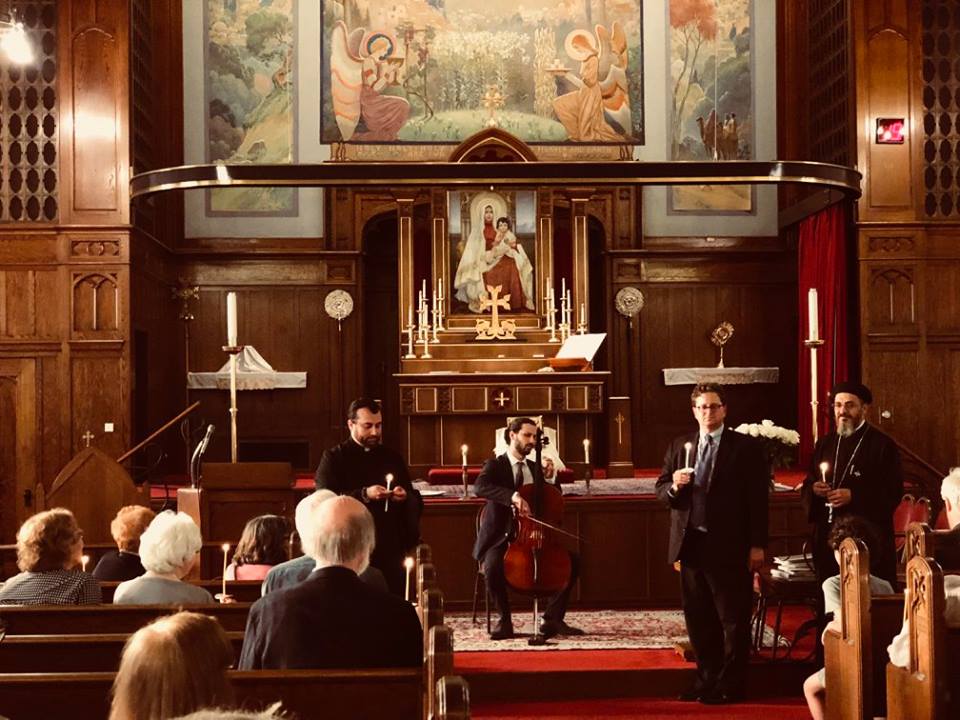In May, the Armenian Church, the Coptic Orthodox Church, and members of the Jewish community, gathered in the St. Sahag Armenian Church in St. Pail to commemorate victims of genocide and mass violence from their communities. This gathering appears to be the first time that these three communities have come together to remember their pasts. The event came to fruition over friendship and food, as well as a recognition that supporting one another, especially over similarly tragic pasts, is important for the survival of minority communities.
 Speakers from each community emphasized a commonality between all three religions, whether a shared history of victimization or a shared theology. Each community has a tragic history, histories that Fr. Tadeos, the priest of the Armenian Church, wished would remain in the past. However, he emphasized that the Coptic Church continues to experience these tragedies today.
Speakers from each community emphasized a commonality between all three religions, whether a shared history of victimization or a shared theology. Each community has a tragic history, histories that Fr. Tadeos, the priest of the Armenian Church, wished would remain in the past. However, he emphasized that the Coptic Church continues to experience these tragedies today.
Fr. Youannes, the Coptic Orthodox priest, reminded attendees of the 2015 beheading of 20 Copts and a Ghanaian by ISIS on a Libyan beach, the Botrossiya bombing of 2016, and the 2017 massacre of Christians on their way to the monastery of St. Samuel the Confessor. To Fr. Youannes and the Coptic Church, these events are understood as merely a continuation of the persecution faced by Christians over the course of many centuries. “This will continue,” he said.
While the identity of the Armenian, Jewish, and Coptic communities are influenced by the memory of persecution, Coptic identity is additionally informed by unrelenting victimization. The Jewish and Armenian communities talked about their genocides in “never again” terms, demanding justice, recognition, and an end to continued discrimination, but the Coptic Church perceives ongoing violence and martyrdom to be a core part of their identity, and one that is predicted to never ease.
Alejandro Baer, director of the Center for Holocaust and Genocide Studies at the University of Minnesota, and Daniel Wildeson, director of the Center for Holocaust and Genocide Education at St. Cloud State University both spoke about the various different ways humans can respond to past genocides and a contemporary global crisis of hate. Wildeson shared some recommendations he had received about making individual personal choices: Turn inward (separate yourself from the internet; build an underground bunker) or turn outward (build bridges, be friendly). Though difficult, he believes in the power of community, courage and hope to deepen understanding. Baer spoke of the necessity for academics to study the causes and conditions of mass violence, with the goal of using such information to prevent future atrocities. He also emphasized the importance of remembrance: “remembering victims will be more meaningful and effective if we do this together, across group and communal boundaries; if we move beyond this happened to us to this happened to so many, and continues to happen today.”
Steve Hunegs, from the Jewish Community Relations Council, also urged the three communities to recognize that although the Holocaust, genocide, and terrorism are central to each of their experiences, they should not let these events define them. Instead, he urged each community to focus on moving forward in strength and in solidarity. This sentiment was echoed by all the speakers as they considered the importance of community in the wake of violence, while pointing to this event as a symbol of continued hope and solidarity.
Miray Philips is a Ph.D. student in Sociology where she studies narratives of violence and suffering, collective memory, and knowledge production on conflict in the Middle East and North Africa. Miray was the 2016-17 Badzin Fellow.

Comments